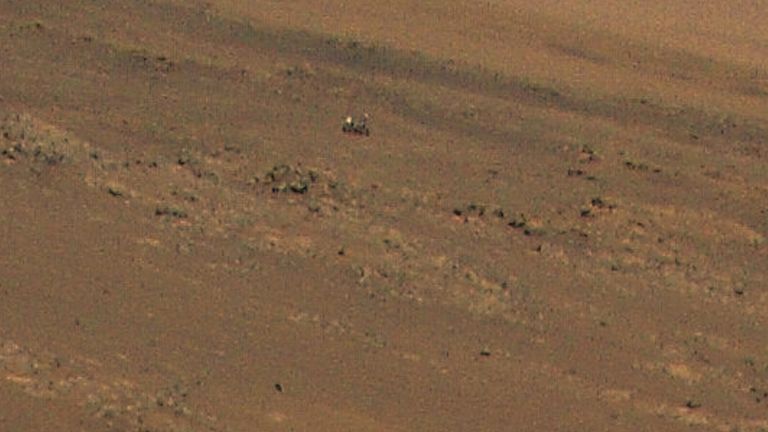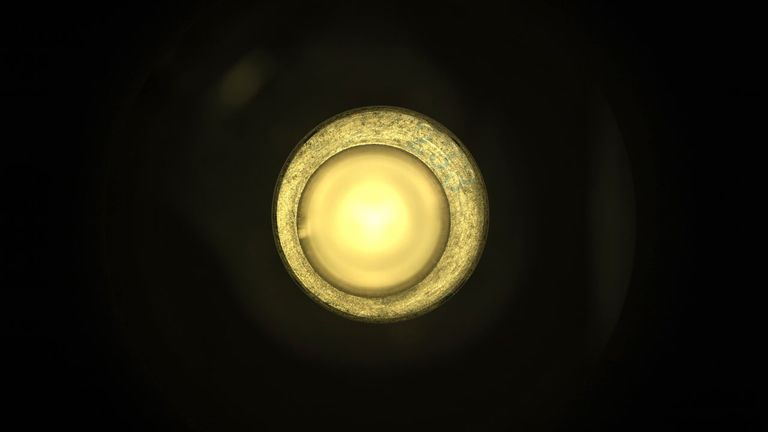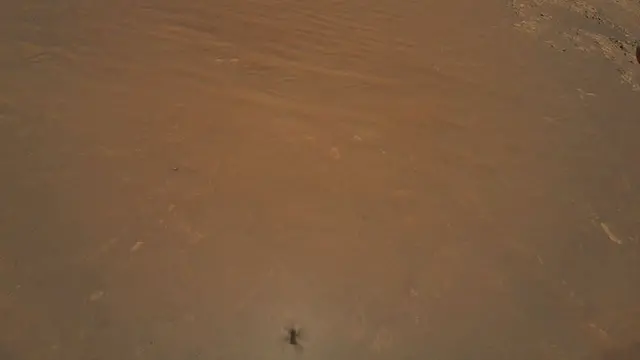NASA's Ingenuity Mars Helicopter has completed its 11th flight on the planet, capturing dozens of images including one in which its mothership - the Perseverance rover - is almost impossible to spot.
The helicopter took photographs of boulders, sand dunes and rocky outcrops across the South Seitah region of the Jezero Crater, the location of an ancient river delta where
NASA
hopes it may find the remnants of microbial life.
"Ingenuity's aerial images are awesome - but even better when you get to play 'Where's Perseverance?' with them," said Robert Hogg, a senior systems engineer at NASA's Jet Propulsion Lab.
He said that "once you find our rover and zoom in, you can make out some details, like the wheels, remote sensing mast, and the MMRTG" - the Multi-Mission Radioisotope Thermoelectric Generator, its power source - "on the aft end".

Image:This zoomed-in shot should make things a little easier. Pic: NASA/JPL-Caltech
"The laws of physics may say it's near impossible to fly on Mars, but actually flying a heavier-than-air vehicle on the red planet is much harder than that," the space agency had quipped about the Ingenuity mission.
The little helicopter's 11th flight since
its maiden voyage back in April
was designed to keep it ahead of the rover, flying about 11mph (five metres per second) to capture images of intriguing geologic features.
Ingenuity works autonomously and cannot be controlled by NASA due to the distance between Earth and Mars.
It takes more than 11 minutes to transmit a radio signal 287 million kilometres (178 million miles) back to Earth - while the most recent flight took only 130 seconds.
It follows Perseverance
failing in its first attempt to collect a rock sample
from Mars as part of the search for signs of ancient life on the planet.
Nasa said on Wednesday that this was down to the rock being unusually soft, and so it was not strong enough to make a sample.

Image:Perseverance's sample tube came up empty. Pic: NASA/JPL-Caltech
The rover is equipped with a two-metre-long robot arm which has a hollow coring bit and a percussive drill at the end of it to extract samples from beneath the Martian surface.
About half a kilogram in rock and soil samples are intended to be cached in large titanium tubes that the rover will leave on the planet to be collected by a yet-to-be-confirmed future mission.
 简体中文
简体中文



